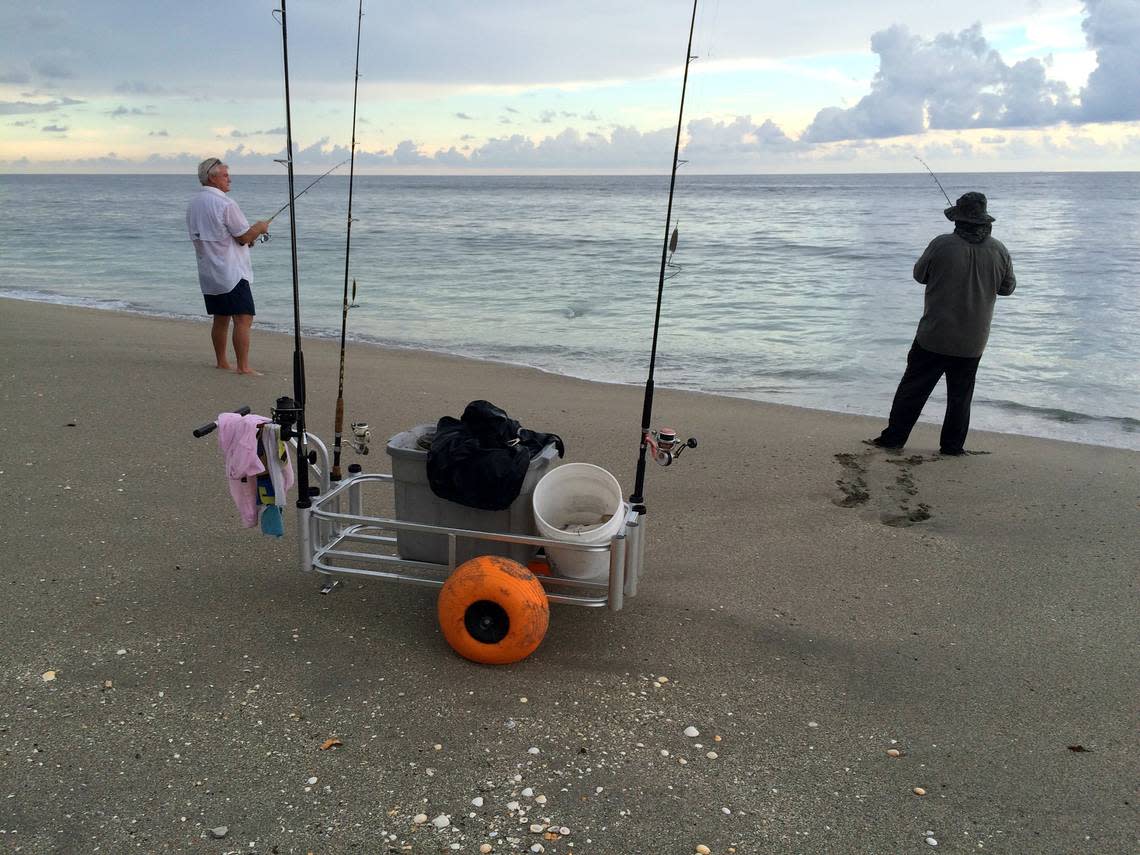This feel-good fishing story has an ending that is hard to believe but is true

As the late outdoors humorist Ed Zern once wrote, “Most fishermen are born honest, but they get over it.”
Yet there are some fish stories that are so amazing, they couldn’t possibly be made up.
Connor Halsa’s recent outing on a Minnesota lake has to be one of the best catch-and-release fish tales of all time.
The 14-year-old was drifting with his lure 20 feet down on the rocky bottom of Lake of the Woods when he set the hook into what he thought was a big walleye. His catch turned out to be a wallet that had $2,000 in cash.
Instead of keeping the money, according to a North Dakota television station, the young man tracked down the wallet’s owner thanks to a business card inside. A Halsa family member called the number on the card, and the person who answered knew that the wallet had been lost by Iowa farmer Jim Denney.
Denney was stunned to learn that his wallet, which he’d lost a year earlier and was stuffed with 20-, 50- and 100-dollar bills, had been found. He recalled that the waves on the lake were rough that day and his wallet had slipped out of his pocket. He didn’t realize he’d lost it overboard until he went to pay his motel bill.
He was even more stunned when Halsa insisted on returning all of the money and would not accept a reward. When Denney visited Halsa and his family to say thanks in person, his cash reward offer was again turned down. Halsa did accept a customized cooler from Denney, who also treated the family to dinner at a local restaurant.
Not even the great author and fisherman Ernest Hemingway could’ve dreamed up a story that fantastic.
Time for teal
Teal are the first ducks to fly south for the winter and Florida’s early duck season is the first opportunity for local waterfowlers to hunt since the regular duck season ended in January.
Although early mornings in a South Florida marsh can be uncomfortable given the heat and swarms of mosquitoes, duck hunters rejoice at being able to again watch a sunrise from their blinds and see blue-winged teal buzz over their decoys. They’ll be happy to shoot a few of the tasty ducks for dinner, plus they’ll find out what gear they need to repair or replace for the regular season.
The early teal and wood duck season is Sept. 16-20. During that time, waterfowlers can take six ducks per day, only two of which can be wood ducks. The teal-only season is Sept. 21-24 and six teal can be taken each day. The regular duck season opens Nov. 18. Shooting hours are 30 minutes before sunrise to sunset.
Teal prefer to hang out in shallow water — two feet or less — that has hydrilla, one of their main food sources. Popular early season hunting spots include Lake Okeechobee, the Everglades and the stormwater treatment areas in western Palm Beach County.
Conscientious waterfowlers will have their decoys, waders, shotguns and boats ready for opening day, but many hunters haven’t touched their gear since the regular season ended nearly eight months ago. If they can get their boat’s motor to start during the early season, they might discover that their decoys no longer float, their waders leak and their dirty shotguns keep jamming.
Something I learned many early seasons ago is not to put your keys to your truck on a floating dock when you get back to the boat ramp. That happened to my buddy Jim Rechkemmer of Fort Lauderdale after we hunted at Lake Okeechobee.
When the dock was jarred by a passing boat’s wake, his keys slid into the water. Rechkemmer didn’t have a spare key for his tow vehicle — add that to your hunting checklist. Since there were no 14-year-olds around to hook the keys with a fishing lure, I stripped down to my undershorts, went into the murky water, felt around with my hand in the muck and miraculously found the keys.
Waiting for mullet
The annual fall mullet run, which happens in late September and early October, is one of the best times to catch a variety of fish from boats, beaches, piers and jetties.
Schools of mullet migrate south along Florida’s Atlantic coast before swimming offshore to spawn. When the baitfish are on the move, they are feasted on by predators ranging from snook, tarpon and sharks to bluefish, jacks and Spanish mackerel.
If you see birds diving and fish jumping off the beach, you’re in the right place. The aforementioned predators will eat live mullet, dead mullet and half a mullet, as well as lures such as spoons, topwater plugs and soft-plastic baitfish imitations.

